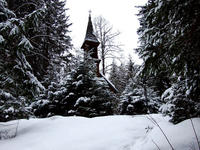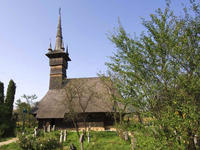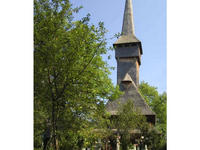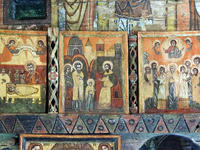You are in: Europe -> Romania -> Wooden Churches of M... , and traditional search or Image Gallery will yield results of this site only
Wooden Churches of Maramureş
| Site number: | 904 |
|
| Type of site: | Cultural | |
| Date: | 17-18th century | |
| Date of Inscription: | 1999 | |
| Location: | Europe, Romania, Region of Transylvania, Maramureş County, Districts of Bârsana, Budesti, Desesti | |
Up to 75 images are shown here. Click on each for more details or on Image Gallery for more images.
| Description: | These eight churches perfectly exhibit a variety of architectural solutions from different periods and areas. They illustrate the range of designs and craftsmanship embraced within these narrow, towering, timber constructions. They incorporate their distinguishing tall, slim clock towers that tower at the western end of the building; they are both single- or double-roofed and covered by shingles. The site holds a meticulous vernacular expression of this northern Romanian mountainous area’s cultural landscape. --WHMNet paraphrase from the description at WHC Site, where additional information is available. | |
| The Maramureş wooden churches in Northern Transylvania are a selection of eight examples of different architectural solutions from different periods and areas. They are Orthodox churches. They are narrow but high timber constructions with characteristic tall, slim bell towers at the western end of the building. They are a particular vernacular expression of the cultural landscape of this mountainous area of northern Romania. Maramureş is perhaps one of the better-known regions of Romania - but still not much travelled. Its well-preserved wooden villages and churches, its traditional lifestyle, and the local colourful dresses still in use make Maramureş as near to a living museum as can be found in Europe. The beautiful gentle landscape of fields and meadows, dotted with farms and villages, and its inhabitants, welcome visitors with wide-open arms. The famous wooden churches of the region were built during the 17th and 18th centuries, on the place of older churches that no longer exist. They are a response to a Hungarian prohibition against stone Orthodox churches. The churches are made of thick logs, are quite small and dark inside, and painted with rather “naïve” Biblical scenes. The most characteristic features are the tall tower above the entrance and the massive roof that seems to dwarf the main body of the church. They have been listed by the UNESCO as a World Heritage Site in 1999, for their religious architecture and timber construction traditions. The historical region of Maramureş, today partitioned between Ukraine and Romania, is one of the places where the log building was not interrupted and where a rich heritage in wood survives. The tradition of building wooden churches in central and southern Maramureş can be traced from the beginning of the 16th century to the turn of the 18th century. Since the knowledge used to build the local wooden churches circulated throughout the European continent, their understanding is of high interest long outside the region. In Maramureş today there are 42 extant wooden churches left, about one third of their total two centuries ago. Besides the extant wooden churches, a major source of knowledge is still saved by a decreasing number of practicing senior carpenters with relevant knowledge and skills in traditional carpentry. --Wikipedia. Text is available under the Creative Commons Attribution-ShareAlike License. | ||
| Source: | http://whc.unesco.org/en/list/904 | |
| Source2: | http://whc.unesco.org/en/list/904/video | |
| Reference: | 1. UNESCO World Heritage Center, Site Page. | |












